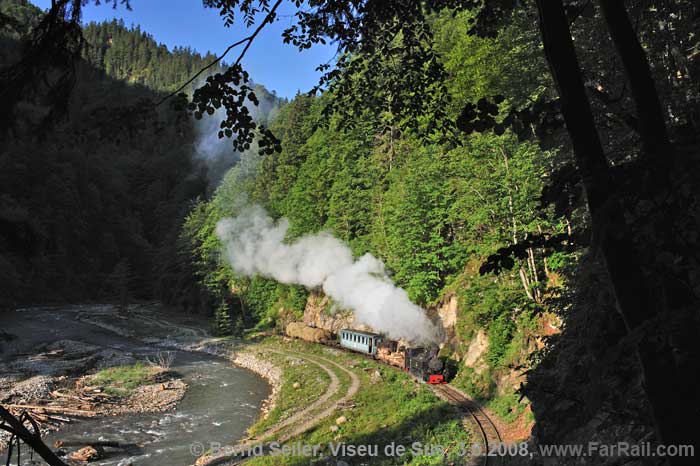

After so many successful tours in autumn and winter we want to visit the Romanian narrow gauge lines again in spring, when the meadows are in blossom and nice positions which are in the shade the rest of the year are sunny spots.
Until the early 1990’s, forestry lines were still common in
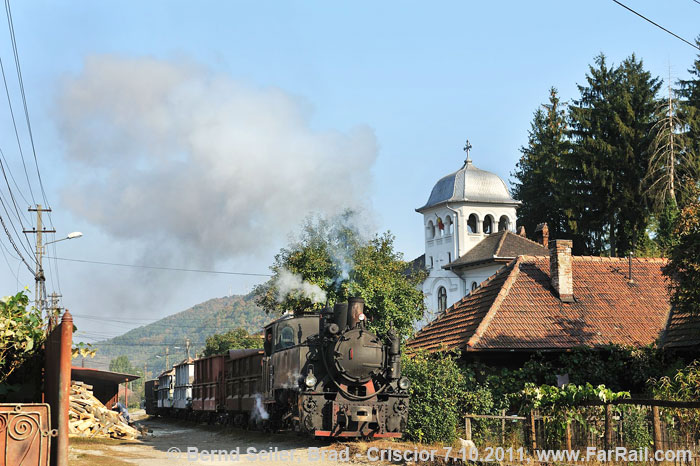
The best opportunities for good pictures and videos can be found on the 40-plus km long line of Viseu de Sus. The other lines are less than half as long as this river valley line from Viseu, but still offer a good variety of opportunities and some very interesting situations for pictures.
A feature of this trip will be a night in the mountains. We’ll visit a forestry log cabin and go to where they cut the timber. The logs will be brought to the railway by horses and probably loaded by hand. For more than two decades this is no longer the normal operation but it is how it used to be. So our focus is not only on the line and the steam trains, but also we’ll take videos and photographs of logging activities.
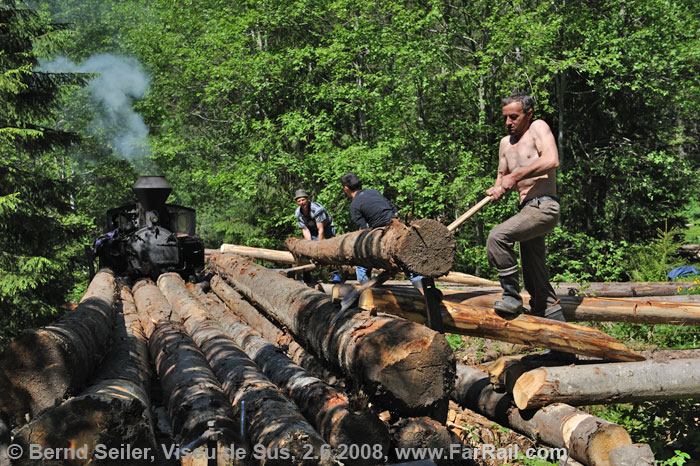
In addition to the forestry lines we’ve added the steam operated industrial narrow gauge line of Brad – Criscior and a section of the former state railway operated narrow gauge line of Turda – Abrud. In Brad we’ve chartered an authentic freight train with a Resita locomotive and about five freight cars, just as it used to be some 30 years ago. This few kilometres long line hasn’t seen many changes over the last decades. It’s an industrial line, completely different from the forestry lines. The Abrud line is surrounded by mountains and offers plenty of good opportunities. We’ll probably run an authentic short mixed train here.
The use of a particular steam locomotive cannot be guaranteed. We can count, however, on the talent and improvisation of the local crews and we hope to be able to use the equipment we want.
We’ll see different types of locomotives in use. In Viseu we’ll use one of the almost “indestructible”
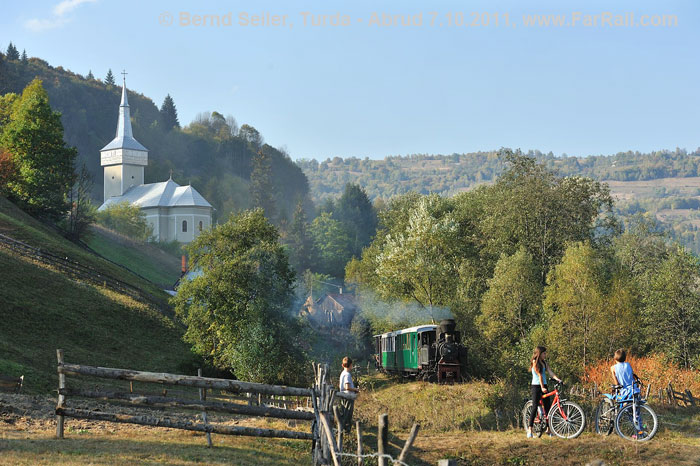
|
Date |
Itinerary |
|
09.05. |
We’ll meet at the airport of Cluj Napoca around 14.00 hrs. Bus transfer to Viseu (about four hours), accommodation in private pensions near the depot of the forest line in Viseu de Sus |
|
10.05. |
In the morning we’ll steam uphill into the mountains. Today is Sunday, so we don’t need to worry about regular trains and have all the time we need for many photo stops and runpasts. Our train consists of a Resita locomotive (hopefully 764 469, the original loco from Viseu), the one and only authentic tender (its overhaul was paid by FarRail Tours), a passenger coach and several empty trucks, just as the normal train used to be many years ago. Accommodation in a simple guesthouse in the mountains either in Faina or in Valea Babii. |
|
11.05. |
In the morning we’ll go further up with our train, as far as possible. Above Valea Babii the track condition is difficult and we might be unable to continue very far beyond that. After some more photographs we’ll head for a place where the logs are being cut. We’ll follow the route of the logs from the forest to the railway line where we have planned a loading process by horse and manpower over a loading ramp. It’s rebuilt was arranged and paid by FarRail Tours. The scenery will be just as it used to be two decades ago. In the afternoon and evening we’ll return to Viseu de Sus, probably with a loaded train. As this is now a normal production train it has to earn money. Hence we don’t expect many photo stops with this train. In the best case we can count on three to four possible pictures of the loaded train. Accommodation in private pensions in Viseu de Sus |
|
12.05. |
We’ll follow the regular diesel trains with a steam hauled passenger train into the mountains. The passenger train of Viseu used to run every Monday. With four Unio Satu Mare coaches and the original tender, it is now possible to recreate the passenger train as fully authentic. We’ll go to Novicior or Paltin, maybe a bit beyond. Today we need to work around all the scheduled diesel trains and railcars and adjust our running times accordingly. However, some good pictures will be possible as the train stops several times on the way, where we can get off and walk a bit forward and wait for the train at a good position. In the late afternoon we’ll go by charter bus to Moldovita. Accommodation in Moldovita. |
|
13.05. |
In the morning (late morning if the weather doesn’t co-operate) we’ll run a charter train on the rebuilt line of Moldovita alongside the traditional houses to the current terminus. We’re using logging trucks, a van and a Resita-type locomotive. Today our focus lays on the upper section of the line. Accommodation in Moldovita. |
|
14.05. |
In the morning we’ll enjoy another charter train in Moldovita. Today our focus lays on the first part of the line. At noon we’ll continue to Brad (a long bus transfer). Accommodation in Brad. |
|
15.05. |
In the morning we’ll take a About 11.30 hrs we’ll continue to Campeni, where another narrow gauge steam train is waiting for us. 764 243, a Budapest-built locomotive, will haul a short, authentic train. We’ll go though a beautiful valley up to Abrud. In the late afternoon, when the shadows have reached the bottom of the valley we’ll go by charter bus to Cluj Napoca. Hotel in Cluj Napoca. |
|
14.05. |
Return flight home. |
On this tour we’ll visit a place where logs come from. This requires a short walk through the forest or recently deforested areas. If you don’t want to see the cutting in the forest you can also wait at the railway line where the cut logs will be probably brought to by horses.
The narrow gauge forest railway of Viseu de Sus is the last remaining one in operation in
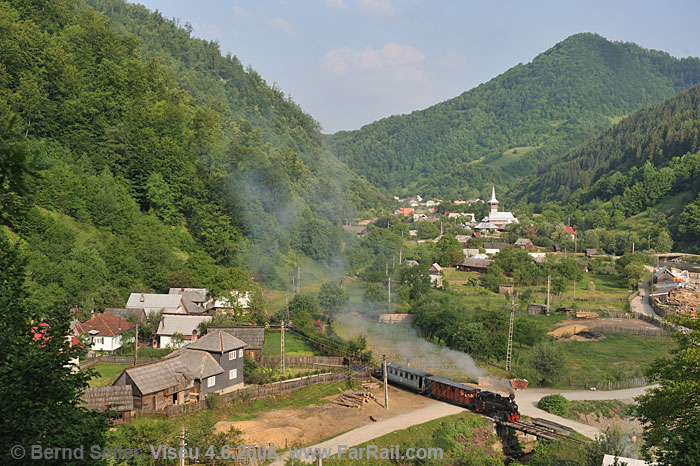
The main line starts in Viseu de Sus at the large sawmill and runs steadily uphill for 43 km to Coman at the Ukrainian border. All branch lines are history except a small branch which can’t be used for steam trains. The line offers plenty of opportunities for good pictures. There are three tunnels very close together but sadly none of them can be photographed in sunshine.
Not only is the landscape something special, the trains in themselves are also really interesting. We will try to make up authentic trains, as they ran in the eighties, when the line belonged to the state run forestry railway CFF (Caile Ferate Forestiere) and when it was worked exclusively by steam locomotives. There are several original coaches back in service, so we are able to haul an authentic passenger train. Besides the locomotive, and original four wheel tender and passenger coach we’ll carry several empty trucks for the logs uphill to the loading points. Sometimes there are forestry tractors or other machinery that will have to be brought up into the forest. This equipment is often carried by the railway as well. We don’t have a direct influence on the train dispatching but our chances of getting an authentic train behind the locomotive are quite good. On our previous trips the train has looked 100% authentic.

At the intermediate stations, during unplanned stops (to raise steam pressure or get one of the log bogies on the track again!) and stops for taking on water, we will have the opportunity to take pictures of the train and its surroundings. Lots of shunting activity can be seen as they leave the log bogies at the loading points. In addition we’ve planned some runpasts along the line.
But remember, some things about the tour are unpredictable. Please expect the odd delay, shortages of wagons and couplings for the wagons, derailments, inaccurate or no information and so on. We’ll try to sort all these things out in advance but experience tells us to expect the unexpected. However, things usually work out in a very satisfactory way. So as on our previous trips: we’ll need to arrange things on the spot, try to get the wagons we want and find the best opportunities together with the local railway staff, who will be as helpful as they can be.
We’ll try to get a loaded train and bring it down to the sawmill in Viseu de Sus.
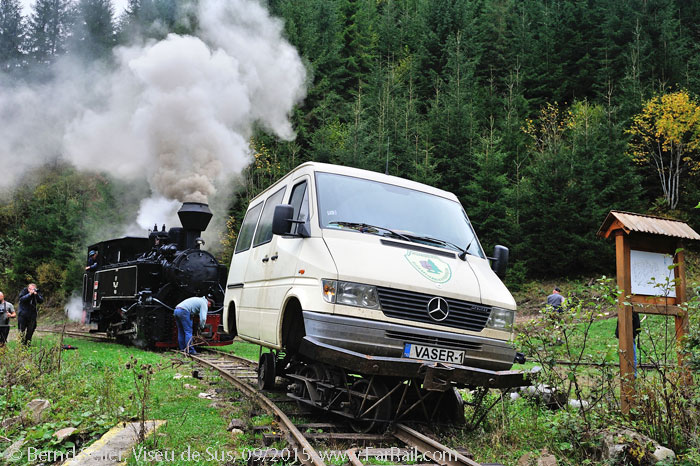
Moldovita was a really nice forestry line. In its last years of operation they used a
We’ll make a visit to the depot where our loco will be fired. Along the line we’ll pass several old-style wooden houses. Unfortunately, the parallel road has been paved in recent years. However, there are still plenty of nice pictures possible.
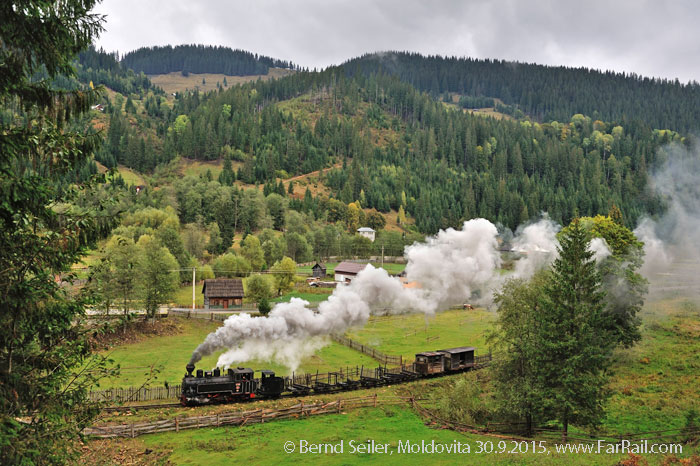
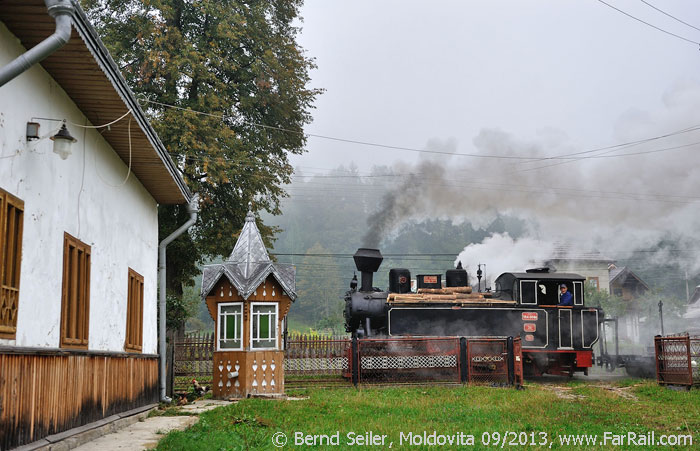
Brad – Criscior is a short industrial line from the state railway station in Brad to an industrial complex for repairing and construction of railway and mining equipment and railway vehicles, in Criscior. The line leaves the state railway on a curve, passes a river bridge and follows a small road in a populated area. Close to the terminus, a large industrial pipe runs parallel to the line, as was the situation 30 years ago. The scenery in this part is really ugly … so ugly, that it’s become photogenic again! But in the first section of the line you can take some nice countryside shots. We’ll form a train out of about five coal hoppers and the local

The former state railway operated narrow gauge line from Turda to Abrud is still serviceable in the short but very scenic section from Campeni to Abrud. This part of the line is surrounded by mountains. Especially photogenic are the little, rural villages along the line which haven’t changed much since 1990. A white painted, wooden church is sitting in the valley of the railway – just perfectly placed to include it in the picture. In autumn, the locals cut the meadows to prepare food for their animals in winter. They still pile this up in the traditional style, so we may find some hay stacks along the line. Something like this is almost extinct in Western Europe these days. The classic

The use of a specific locomotive cannot be promised on any line we’ll visit. In Viseu we will use steam engines for the regular trains depending on their availability. At the moment we don’t know which steam locomotives will be operational. The engines built by

In our pensions and hotels there are sufficient power supplies for battery charging. In our accommodation in the mountains, there is no cell phone signal available (luckily).
Health: no problems exist concerning your health. The water from the numerous springs along the line in Viseu can be drunk without a problem; even the small streams just above the first village have clear and drinkable water. The only serious health risk is if you are not careful around an operating railway. Jumping up or down from moving trains is not allowed. Getting on or off, and travelling on the train is at your own risk, so take care along the railway. Wear good sturdy shoes.
For this tour you will need a valid passport, EU citizens only a valid ID card. A visa for citizens of the European Union is not necessary. For citizens of other countries (by then probably including the UK) please contact your local Romanian embassy for details.
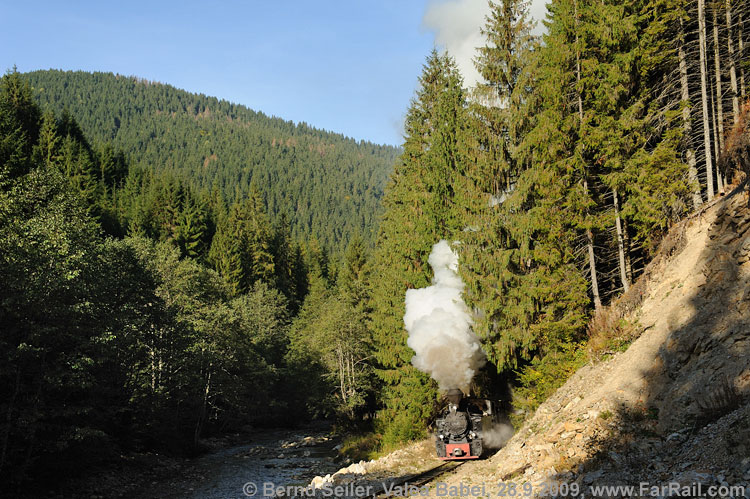
You’ll need little local currency. Food, if not included, and beverages are quite cheap. In Viseu we’ll have some things on the train, including hot coffee.
The tour is planned with the dedicated photographer and videographer in mind..

Please remember that the accommodation, buses and the forest railway itself do not necessarily conform to current EU-standards. That’s exactly one of the reasons why we are going there. Safety and environmental standards are still not fully developed so a word of warning - please beware of the dangers in and around the railway and other modes of transportation. An accident and health insurance policy covering foreign countries is essential including of course trip cancellation provisions should you not be able to travel at the last minute.
Neither FarRail Tours nor the local operators can be held responsible for any accidents, delays etc.
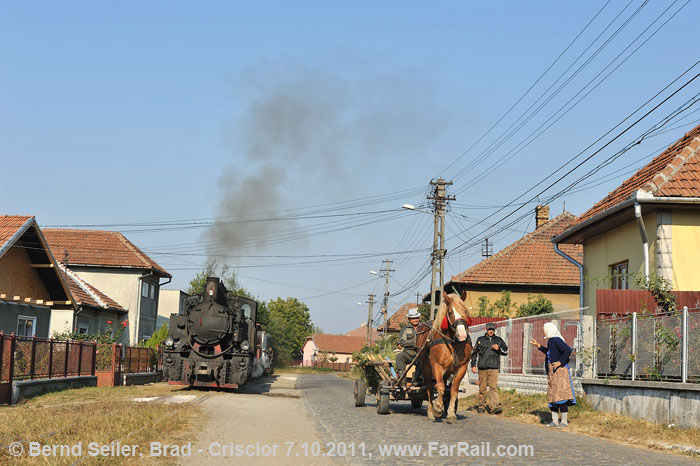
| Romania | ||
| Forestry lines in spring | 22 to 30 participants | £1,390 |
| 09.05.2020 – 16.05.2020 | 16 to 21 participants | £1,720 |
| Single room surcharge | £170 | |
| Registration Deadline: 31.01.2020 Cancelled due to Covid-19 | ||
The price includes:
Not included are:
